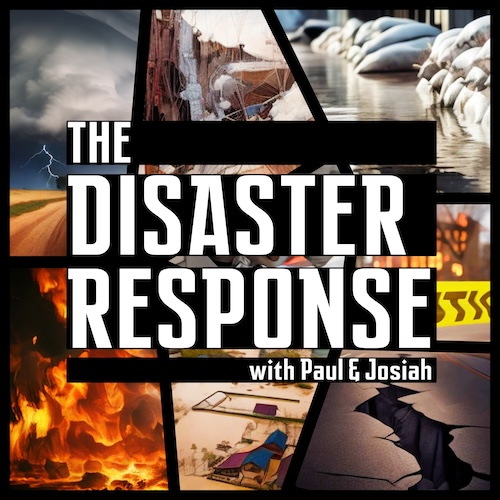Q: How did residents receive information about the Camp Fire via phone or internet if telecommunication infrastructure was destroyed by the fire?
A: Some telecommunications infrastructure did melt, but not 100% of it. So some residents were able to make phone calls and access the internet to learn about evacuation orders, but it wasn’t consistent through the county.
Q: Were the water pipes in Paradise replaced with pipes made of a sturdier material?
A: We mentioned in the episode that the pipes were made of “plastic”, but let me take this opportunity to be hyperspecific about different types of plastic, because plastic is a highly variable material that reacts to extreme heat very differently depending on its composition. Prior to the Camp Fire, about 35% of water main piping in Paradise was made of PVC, or polyvinyl chloride. While PVC is generally more flame-resistant to other kinds of plastics due to the presence of chlorine, it has a lower melting point (between 210-250 degrees F) to other kinds of plastic, leading to the damage described in the episode. HDPE (high-density polyethylene) pipe, with a melting point of 460 degrees F, was also used prior to the fire.
Studies conducted by Purdue University’s Healthy Plumbing Consortium and Center for Plumbing Safety have shown that these pipes exposed to extreme heat also may have leaked chemicals such as benzene into the drinking water, contaminating it for months after the blaze. Others (from the Plastic Pipes Institute, an industry trade association) dispute the idea that the degradation of the pipes themselves caused the contamination, positing that instead these chemicals were introduced into the water supply externally when the pipes were damaged. It’s worth taking note that there a lot of people who have a strong financial stake in the debate of whether or not plastic piping creates a higher risk for chemical leaching in wildfire environments.
Ultimately, the decision was made to rebuild the plumbing infrastructure with HDPE, rather than either PVC or a non-plastic material, due to its higher melting point and flexibility. Flexibility is important in water piping material in this area because California also experiences quite a lot of seismic activity, which can break more brittle materials.
Article describing potential health risks of plastic piping: https://www.circleofblue.org/2020/world/plastic-pipes-a-water-contamination-risk-after-fire-data-shows/
The academic paper referenced in the above article: https://pubs.rsc.org/en/content/articlelanding/2021/ew/d0ew00836b
Another academic article describing degradation temperatures and chemical risks of different types of plastic materials: https://www.ncbi.nlm.nih.gov/pmc/articles/PMC6958356/
An article describing Paradise’s rebuilding plans (which also include some more specific details about the details of the HDPE plastic that will be replacing the damaged pipes, for all you plastics nerds in the audience): https://undergroundinfrastructure.com/magazine/2021/january-2021-vol-76-no-1/features/rebuilding-of-paradise-counts-on-hdpe-pipe
A Washington Post article discussing the various ways in which wildfires pose risks to drinking water supplies: https://engineering.purdue.edu/PlumbingSafety/news/how-wildfires-damage-watersheds-and-contaminate-our-drinking-water
The Wildfire Safety portion of Purdue University’s Healthy Plumbing Consortium and Center for Plumbing Safety website: https://engineering.purdue.edu/PlumbingSafety/resources/wildfire-response

Leave a Reply